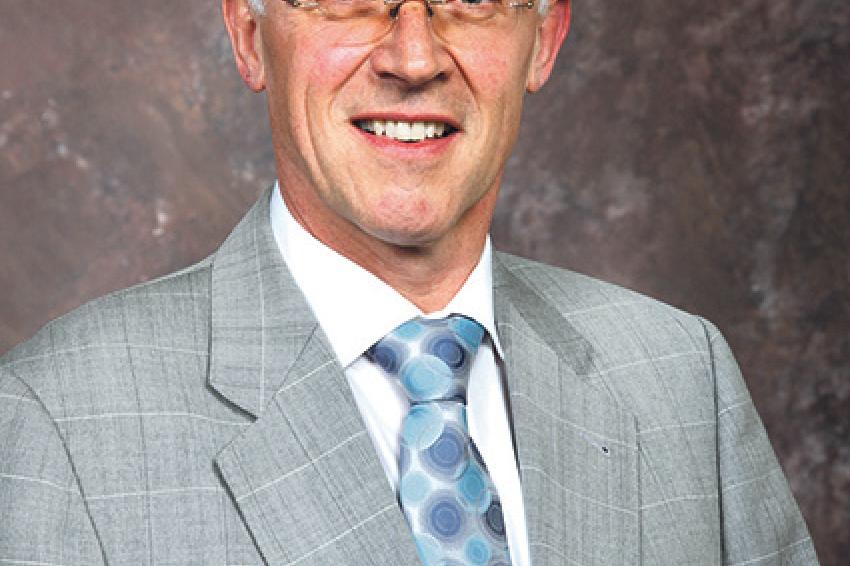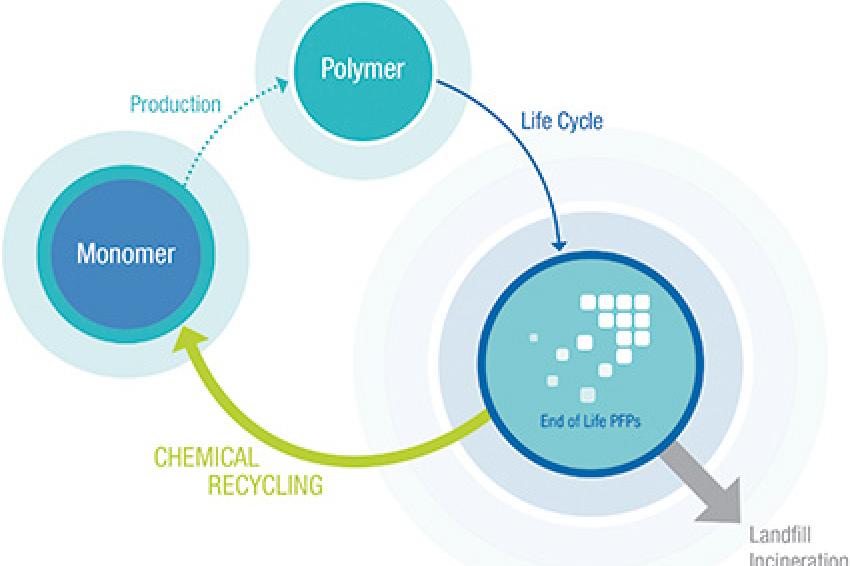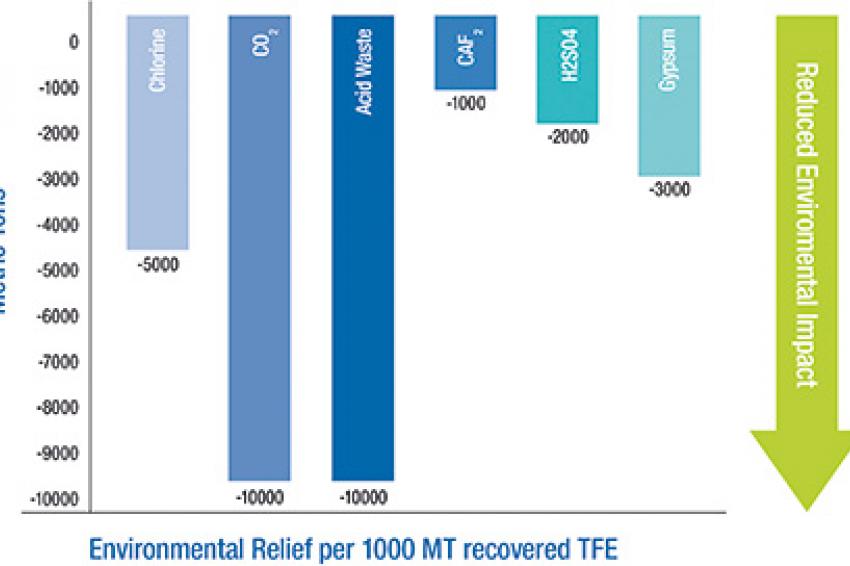Innovative Process Enables Up-Cycling of Perfluorinated Polymers
31.01.2014 -
Precious Material - Without fluoropolymers many environmental regulation performance specifications for numerous industries would be unachievable. Until now, however, the effective recycling of these marvelous materials has remained elusive.
In cooperation with InVerTec and the University of Bayreuth, and sponsored by Deutsche Bundesstiftung Umwelt , Dyneon designed the first process to recover up to 95% of the monomers split from fluoropolymer - a major breakthrough that promises to vastly increase the sustainability of this highly precious material. A demonstration plant will begin operating in September 2014 in Gendorf.
Most perfluorinated fluoropolymer scrap and end-of-life products end up either in landfills or incinerators. In a landfill, they represent no threat to the environment and would remain for thousands of years without decomposing, but such a scenario constitutes an utter waste of a very valuable resource. The other option, incinerating, is even less desirable, as it actually converts a valuable resource into undesirable decomposition products and requires a great deal of energy, produces carbon dioxide emissions and is problematic for the incinerating plant because of its high corrosivity.
Indeed, our need to recycle fluoropolymers is both acute and manifold. Today, calcium fluoride, the starting material for the manufacturing of fluoropolymers, is used throughout the world to manufacture a host of technically advanced products, many of which, in a variety of ways, help protect our environment. It occurs naturally as the mineral fluorite, often referred to as fluorspar, and is indispensible to the production of hydrofluoric acid.
Given the world's voracious appetite for products made using calcium fluoride and the fact that its availability is naturally limited, particularly in Europe, it is obvious that our need to handle this material more sustainably is indisputable. Recycling of fluorinated polymers is obviously the only answer. But how can we recycle fluoropolymer scrap and end-of-life products sustainably?
Repro PTFE Not the Answer
Reprocessed polytetrafluoroethylene (PTFE) is available on the market, but the material and the process that produces it are both very limited. The process requires pure PTFE, obtained through the application of heat and acid to remove inorganic contaminants. Like with most recycled materials, however, the quality of the final product is inferior, and this is a significant disadvantage.
Products that contain even as little as 5% repro PTFE tend to be porous, leading to drastically reduced life spans in fabricated products that are subject to frost. Moreover, parts containing 20% reprocessed PTFE display significantly decreased dielectric properties and durability. Being that the only fluoropolymer recycling process available until now has been so limited, we are confronted with a glaring question: What do we do with fluoropolymer scrap and end-of-life products? Neither disposing of them at dumps nor incineration represent viable sustainable solutions. Besides producing poor quality, reprocessing PTFE is far too wasteful.
Model Plant for a Multistage Pyrolysis Process
As it now seems, the answer to this question is not far off. Dyneon has joined forces with the University of Bayreuth's materials processing department and the associated Institut für Werkstoffverarbeitung e.V., a process-engineering institute, to design and build a plant that closes the fluoropolymer-recycling loop. Together, they have engineered a model plant that employs a carefully designed and controlled multistage pyrolysis process in a fluidized bed reactor. The German Bundesministerium für Umwelt is funding the plant with a KfW grant of €1 million through a program it offers to stimulate and support innovations that protect the environment.
The process integrates seamlessly into existing fluoropolymer production lines. The pyrolysis decomposes perfluorinated polymers, with a recovery rate of 90-95%, into gaseous monomers, which an already existing line cleans before feeding them back into the manufacturing process. The excellent quality of both the monomers and, of course, the fluoropolymers makes this solution look like the industry's long-sought answer, far exceeding that of physically reprocessed products; and pure starting material is being generated. For this reason, Dyneon calls this process "up-cycling" instead of "recycling". The whole plant is integrated in the on-site emission control system.
Project Status
"The technical challenges confronting us with the design and building of the plant are immense," said Dr. Bernd Gangnus, senior technical manager, European laboratories.
Particularly, building the plant so that it would withstand corrosion is difficult. Another challenge is to design the facility so that there is sufficient control when cooling the monomer gas. This is necessary to avoid polymerization, which would affect the quality and clog the lines and filters.
"But together with our partners, we were able to master these challenges," adds Gangnus.
The project is now moving past the laboratory phase and into the larger scale demonstration stage, with work having begun on the construction of the plant's building and infrastructure. Plans call for the new facility to be up and running in September 2014, when the first industry-scale high temperature fluoropolymer recycling plant is expected in the first year to process 500 metric tons of fluoropolymer waste generated from Dyneon's plant and other sources.
Enormous Potential
The environmental protection potential this process offers is incredible. Besides saving valuable resources that would be required to produce monomers for the manufacture of fluoropolymers, it drastically reduces waste and emissions as Dyneon's extrapolations of laboratory test results in figure 2 show. The figures use a basis of 1,000 metric tons of up-cycled material for the estimates.
Logistics Infrastructure Needed
"It is important that, while we are getting the initial bugs out of the plant in the start-up phase, an infrastructure emerges that can provide the logistical basis necessary to keep the plant supplied with fluoropolymer material once it goes into regular operation," said Dr. Klaus Hintzer, corporate scientist at Dyneon. "This plant represents an opportunity for new businesses and requires industrywide participation to create a suitable logistics infrastructure."
Initially, the plant will process clean fluoropolymer materials, i.e., wet waste, off-specification materials of unfilled PTFE from manufacturers, and unfilled PTFE scrap sourced from moulding, sintering and machining operations.
In a later phase, it will process PTFE compounds that may contain many different types of fillers: glass fibre, graphite, carbons, ceramics, organic fillers, pigments, etc. In addition, there is a project group working out the details necessary to up-cycle partially fluorinated polymers.
There is no question that this project's technical challenges are enormous, but they are dwarfed in the light of what the realization of this project immediately means to the sustainability of fluoropolymers. And it's only the beginning.
Contact
Dyneon GmbH
Carl-Schurz-Str. 1
41460 Neuss
Germany







